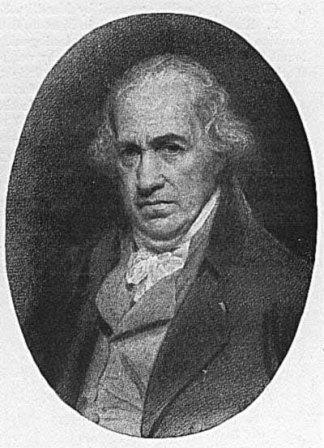

Evans found another way by collecting scraps and shavings of wood from his work during the day to serve as fuel for small fires. An anecdote from the period recalls that his master, an illiterate and extremely frugal man, forbade Evans the use of candles to illuminate his reading in the evenings.


Aged 17, Evans was apprenticed to a wheelwright and wagon-maker in Newport. The nature and location of his early education has not been preserved, however his literacy was demonstrably strong from a young age, both as a writer and an avid reader on technical subjects. Little else is known of Evans's early life, and surviving records provide few details as to his formative years. Oliver was the fifth of twelve children he had four sisters and seven brothers. His father was a cordwainer by trade, though he purchased a large farm to the north of Newport on the Red Clay Creek and moved his family there when Oliver was still in his infancy. Oliver Evans was born in Newport, Delaware on September 13, 1755, to Charles and Ann Stalcop Evans. Despite the importance of his work, his contributions were frequently overlooked (or attributed to others after his death) so he never became a household name alongside the other steam pioneers of his era. Disappointed and then angry at the perceived lack of recognition for his contributions, Evans became combative and bitter in later years, which damaged his reputation and left him isolated. Evans had influential backers and political allies, but lacked social graces and was disliked by many of his peers. Similarly, he drew up designs for a solar boiler, machine gun, steam-carriage gearshift, dough-kneading machine, perpetual baking oven, marine salvage process, quadruple-effect evaporator, and a scheme for urban gas lighting, ideas and designs which would not be made reality until some time after his death. He was the first to describe vapor-compression refrigeration and propose a design for the first refrigerator in 1805, but it would be three decades until his colleague Jacob Perkins would be able to construct a working example. Known as the Oruktor Amphibolos, it was the first automobile in the country and the world's first amphibious vehicle, although it was too primitive to be a success as either.Įvans was a visionary who produced designs and ideas far ahead of their time. Evans dreamed of building a steam-powered wagon and would eventually construct and run one in 1805. Evans was a driving force in the development and adoption of high-pressure steam engines in the United States.

Later in life Evans turned his attention to steam power, and built the first high-pressure steam engine in the United States in 1801, developing his design independently of Richard Trevithick, who built the first in the world a year earlier. This novel concept would prove critical to the Industrial Revolution and the development of mass production. In doing so Evans designed a continuous process of manufacturing that required no human labor. Going into business with his brothers, he worked for over a decade designing, building and perfecting an automated mill with devices such as bucket chains and conveyor belts.
1st steam engine inventor series#
He left behind a long series of accomplishments, most notably designing and building the first fully automated industrial process, the first high-pressure steam engine, and the first (albeit crude) amphibious vehicle and American automobile.īorn in Newport, Delaware, Evans received little formal education and in his mid-teens was apprenticed to a wheelwright. A pioneer in the fields of automation, materials handling and steam power, Evans was one of the most prolific and influential inventors in the early years of the United States. He was one of the first Americans building steam engines and an advocate of high pressure steam (as opposed to low pressure steam). Oliver Evans (Septem– April 15, 1819) was an American inventor, engineer and businessman born in rural Delaware and later rooted commercially in Philadelphia.


 0 kommentar(er)
0 kommentar(er)
